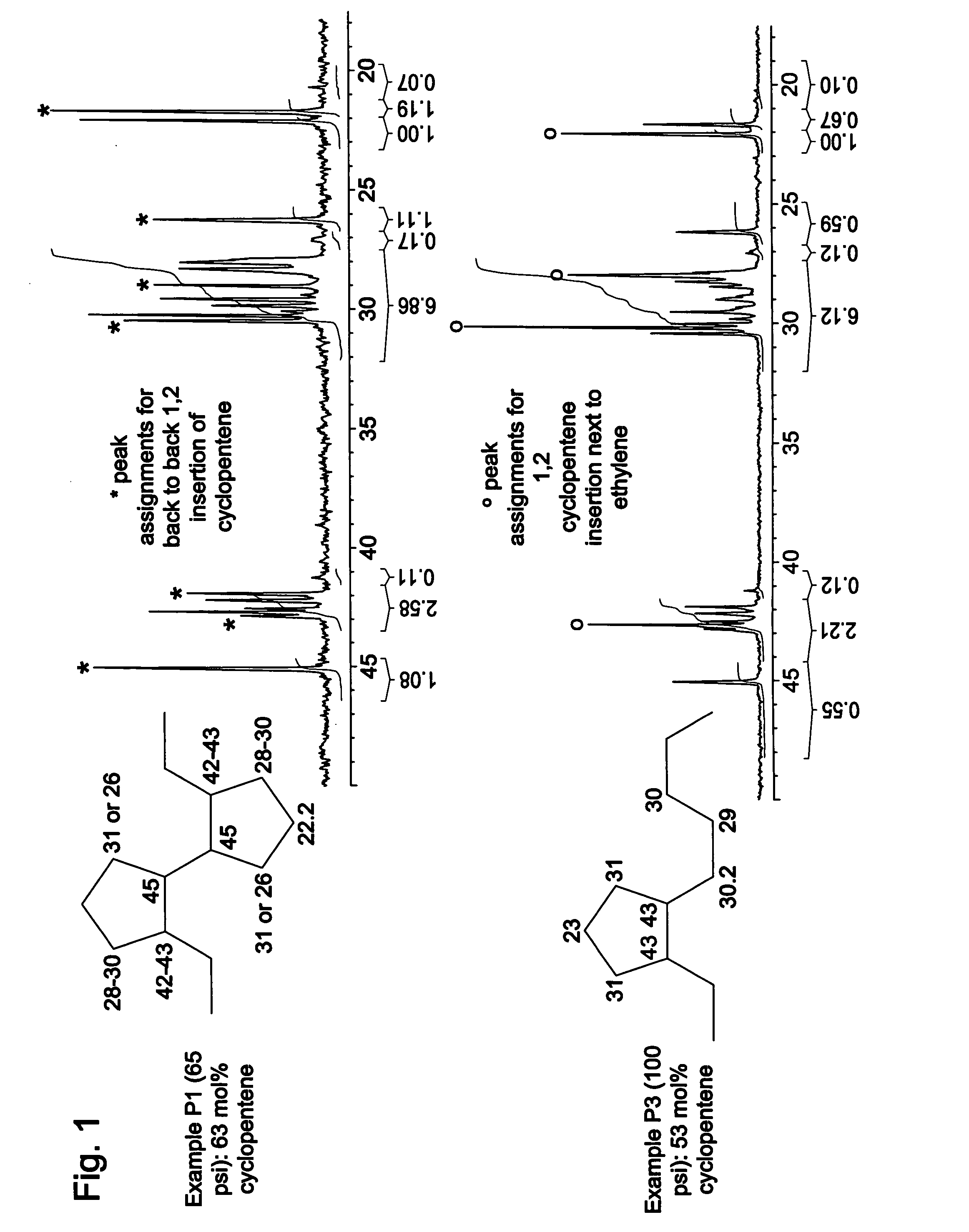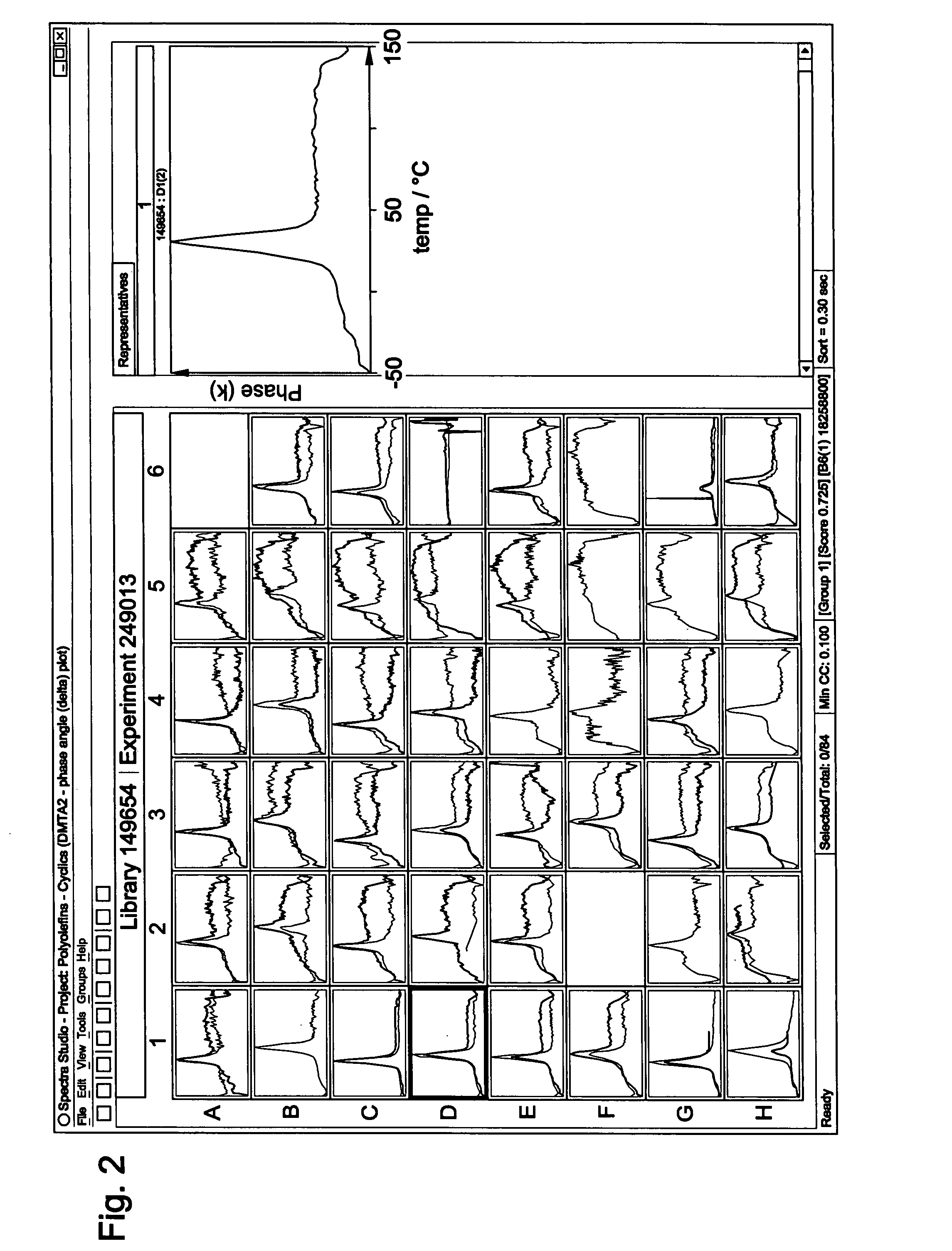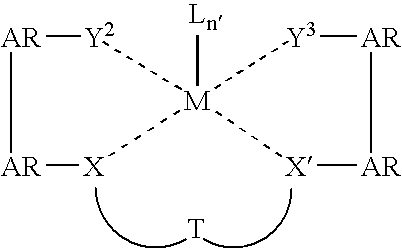Cyclic olefin copolymers, and methods of making the same
a technology of cyclopentene and copolymer, which is applied in the field of copolymers of cyclic olefins, can solve the problems of metallocene catalysts, inability to polymerize cyclopentene and ethylene to produce a polymer with commercially desirable properties
- Summary
- Abstract
- Description
- Claims
- Application Information
AI Technical Summary
Benefits of technology
Problems solved by technology
Method used
Image
Examples
example 1
Ligand and Metal Complex Synthesis
General Synthesis Schemes for L1:
[0106]
[0107]Synthesis of Upper Ring Building Block:
[0108]Synthesis of Bridged Lower Ring Dibromide Building Block:
[0109]Double Nezishi Coupling of Upper and Lower Ring Building Blocks:
Detailed Synthesis Experimental
[0110]
[0111]2-bromo-4-methylphenol (11 mmol, 1.0 eq) was taken up in dry THF (20 mL) under an atmosphere of nitrogen and cooled to 0° C. DIEA (2.8 mL, 16 mmol, 1.5 eq) was added followed by dropwise addition of MOMCl (1.2 mL, 16 mmol, 1.5 eq). The reaction was allowed to stir and warm to room temperature over 18 h. THF was removed and the crude material redissolved in EtOAc and washed with 2 M NaOH and water. The organic layer was dried over Na2SO4 and the crude material purified by flash chromatography (Biotage FLASH 40M KP-Sil silica, 4% Et2O in hexane) to yield 2.12 g (86%) of the desired product as a viscous clear oil. 1H NMR (CD2Cl2, 300 MHz): 7.36 (d, J=1.4 Hz, 1H), 7.10-6.97 (m, 2H), 5.18 (s, 2H), 3...
example 2
Ethylene / Cyclopentene Copolymerizations using Isolated Complexes
[0131]Preparation of the Polymerization Reactor Prior to Injection of Catalyst composition: A pre-weighed glass vial insert and disposable stirring paddle were fitted to each reaction vessel of the reactor. The reactor was then closed, 0.400 mL of a 0.05 M solution of Modified Methylaluminoxane 3A (from Azko Chemical Inc., Chicago, Ill.) (“MMAO-3A”) in toluene, 3.00 mL of cyclopentene and 0.600 mL of toluene were injected into each pressure reaction vessel through a valve. The temperature was then set to the appropriate setting (the specific temperatures for each polymerization are listed in Table 1, below), and the stirring speed was set to 800 rpm, and the mixture was exposed to ethylene (the specific pressure for each example is listed in Table 1, below). The pressure and the temperature setting were maintained, using computer control, until the end of the polymerization experiment, which was accomplished by introduc...
PUM
| Property | Measurement | Unit |
|---|---|---|
| Temperature | aaaaa | aaaaa |
| Temperature | aaaaa | aaaaa |
| Fraction | aaaaa | aaaaa |
Abstract
Description
Claims
Application Information
 Login to View More
Login to View More - R&D
- Intellectual Property
- Life Sciences
- Materials
- Tech Scout
- Unparalleled Data Quality
- Higher Quality Content
- 60% Fewer Hallucinations
Browse by: Latest US Patents, China's latest patents, Technical Efficacy Thesaurus, Application Domain, Technology Topic, Popular Technical Reports.
© 2025 PatSnap. All rights reserved.Legal|Privacy policy|Modern Slavery Act Transparency Statement|Sitemap|About US| Contact US: help@patsnap.com



